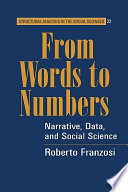 | Hector Macpherson - 1926 - 220 pages
...Sun sweep out equal areas in equal times. (3) The squares of the times of revolution of the planets round the Sun are proportional to the cubes of their mean distances from the Sun. These laws made the Solar System intelligible, and showed it to be a system in actuality.... | |
 | Floyd Karker Richtmyer - 1928 - 682 pages
...would result in Kepler's third law, namely, that the squares of the periods of rotation of the planets round the sun are proportional to the cubes of their mean distances from the sun. The gist of Newton's reasoning is as follows: Suppose the attraction between sun and planet... | |
 | Trevor H. Levere, Trevor Harvey Levere - 2002 - 296 pages
...describes equal areas in equal times. 3. The squares of the periods of rotation of the planets about the sun are proportional to the cubes of their mean distances from the sun. Steffens reversed this order, so that his first law was Kepler's third. His derivation was... | |
 | Roger Muncaster - 1993 - 964 pages
...sweeps out equal areas in equal times. 3 The squares of the periods of revolution of the planets about the Sun are proportional to the cubes of their mean distances from it. Fig. 8.1 illustrates law 2 but gives an exaggerated idea of the eccentricity of most planetary... | |
 | K. K. Mohindroo - 1997 - 1000 pages
...Fig. 8.3 (3) The squares of the times of revolution of the planets (ie, their periodic times) about the Sun are proportional to the cubes of their mean distances from it (the law of periods). Mathematically, this is expressed as or Fig. 8.2 where T = time of one revolution... | |
 | Carlos I. Calle - 2001 - 682 pages
...is, the squares of the periods of any two planets (the time taken for a complete revolution around the Sun) are proportional to the cubes of their mean distances from the Sun. The mean distance is also the semi-major axis of the ellipse. If T is the period and r the... | |
 | Paula Ross - 2002 - 380 pages
...will sweep out equal areas. Law 3 The squares of the periods of revolution of any two planets about the Sun are proportional to the cubes of their mean distances from the Sun. This third law can be expressed as T2 * R3, where R is the mean distance of the planet from... | |
 | Roberto Franzosi - 2004 - 506 pages
...led him to formulate the law that the squares of the lines of revolution of any two planets around the sun are proportional to the cubes of their mean distances from the sun. "A brilliant discovery from our point of view," writes Debus (1978, p. 95). But from Kepler's... | |
| |